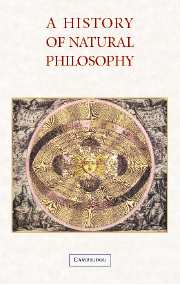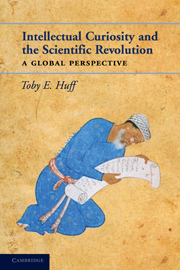Refine search
Actions for selected content:
13588 results in History of science and technology
The Social Brain and the Myth of Empathy
-
- Journal:
- Science in Context / Volume 25 / Issue 3 / September 2012
- Published online by Cambridge University Press:
- 24 July 2012, pp. 401-424
- Print publication:
- September 2012
-
- Article
- Export citation
Empathy in Translation: Movement and Image in the Psychological Laboratory
-
- Journal:
- Science in Context / Volume 25 / Issue 3 / September 2012
- Published online by Cambridge University Press:
- 24 July 2012, pp. 301-327
- Print publication:
- September 2012
-
- Article
- Export citation
Einfühlung and Abstraction in the Moving Image: Historical and Contemporary Reflections
-
- Journal:
- Science in Context / Volume 25 / Issue 3 / September 2012
- Published online by Cambridge University Press:
- 24 July 2012, pp. 425-446
- Print publication:
- September 2012
-
- Article
- Export citation
SIC volume 25 issue 3 Cover and Front matter
-
- Journal:
- Science in Context / Volume 25 / Issue 3 / September 2012
- Published online by Cambridge University Press:
- 24 July 2012, pp. f1-f3
- Print publication:
- September 2012
-
- Article
-
- You have access
- Export citation
Loose Coordinations: Theater and Thinking in Gertrude Stein
-
- Journal:
- Science in Context / Volume 25 / Issue 3 / September 2012
- Published online by Cambridge University Press:
- 24 July 2012, pp. 447-467
- Print publication:
- September 2012
-
- Article
- Export citation
The Strength of Weak Empathy
-
- Journal:
- Science in Context / Volume 25 / Issue 3 / September 2012
- Published online by Cambridge University Press:
- 24 July 2012, pp. 383-399
- Print publication:
- September 2012
-
- Article
- Export citation
Empathy, Simulation, and Narrative
-
- Journal:
- Science in Context / Volume 25 / Issue 3 / September 2012
- Published online by Cambridge University Press:
- 24 July 2012, pp. 355-381
- Print publication:
- September 2012
-
- Article
- Export citation
SIC volume 25 issue 3 Cover and Back matter
-
- Journal:
- Science in Context / Volume 25 / Issue 3 / September 2012
- Published online by Cambridge University Press:
- 24 July 2012, pp. b1-b10
- Print publication:
- September 2012
-
- Article
-
- You have access
- Export citation
Introduction: Emotion and the Sciences: Varieties of Empathy in Science, Art, and History
-
- Journal:
- Science in Context / Volume 25 / Issue 3 / September 2012
- Published online by Cambridge University Press:
- 24 July 2012, pp. 287-300
- Print publication:
- September 2012
-
- Article
- Export citation
Self-Projection: Hugo Münsterberg on Empathy and Oscillation in Cinema Spectatorship
-
- Journal:
- Science in Context / Volume 25 / Issue 3 / September 2012
- Published online by Cambridge University Press:
- 24 July 2012, pp. 329-353
- Print publication:
- September 2012
-
- Article
- Export citation
Science, medicine and new imperial histories
-
- Journal:
- The British Journal for the History of Science / Volume 45 / Issue 3 / September 2012
- Published online by Cambridge University Press:
- 06 July 2012, pp. 443-450
- Print publication:
- September 2012
-
- Article
- Export citation
Fostering a new industry in the Industrial Revolution: Boulton & Watt and gaslight 1800–1812
-
- Journal:
- The British Journal for the History of Science / Volume 46 / Issue 2 / June 2013
- Published online by Cambridge University Press:
- 07 June 2012, pp. 199-229
- Print publication:
- June 2013
-
- Article
- Export citation
A Victorian extinction: Alfred Newton and the evolution of animal protection
-
- Journal:
- The British Journal for the History of Science / Volume 46 / Issue 4 / December 2013
- Published online by Cambridge University Press:
- 07 June 2012, pp. 695-714
- Print publication:
- December 2013
-
- Article
- Export citation

A History of Natural Philosophy
- From the Ancient World to the Nineteenth Century
-
- Published online:
- 05 June 2012
- Print publication:
- 22 January 2007

The Archaeology of Measurement
- Comprehending Heaven, Earth and Time in Ancient Societies
-
- Published online:
- 05 June 2012
- Print publication:
- 19 April 2010

The Foundations of Modern Science in the Middle Ages
- Their Religious, Institutional and Intellectual Contexts
-
- Published online:
- 05 June 2012
- Print publication:
- 13 October 1996

Intellectual Curiosity and the Scientific Revolution
- A Global Perspective
-
- Published online:
- 05 June 2012
- Print publication:
- 11 October 2010
Emily Steel, He Is No Loss: Robert McCormick and the Voyage of HMS Beagle. BSHS Monograph 14. Norwich: British Society for the History of Science, 2011. Pp. x+63. ISBN 978-0-906450-18-5. £10.00 (paperback).
-
- Journal:
- The British Journal for the History of Science / Volume 45 / Issue 2 / June 2012
- Published online by Cambridge University Press:
- 14 June 2012, pp. 301-302
- Print publication:
- June 2012
-
- Article
- Export citation
BJH volume 45 issue 2 Cover and Back matter
-
- Journal:
- The British Journal for the History of Science / Volume 45 / Issue 2 / June 2012
- Published online by Cambridge University Press:
- 14 June 2012, pp. b1-b5
- Print publication:
- June 2012
-
- Article
-
- You have access
- Export citation
Robert Goulding, Defending Hypatia: Ramus, Savile, and the Renaissance Rediscovery of Mathematical History. Heidelberg, London and New York: Springer, 2010. Pp. xx+201. ISBN 978-90-481-3541-7. £90.00 (hardback).
-
- Journal:
- The British Journal for the History of Science / Volume 45 / Issue 2 / June 2012
- Published online by Cambridge University Press:
- 14 June 2012, pp. 286-288
- Print publication:
- June 2012
-
- Article
- Export citation
